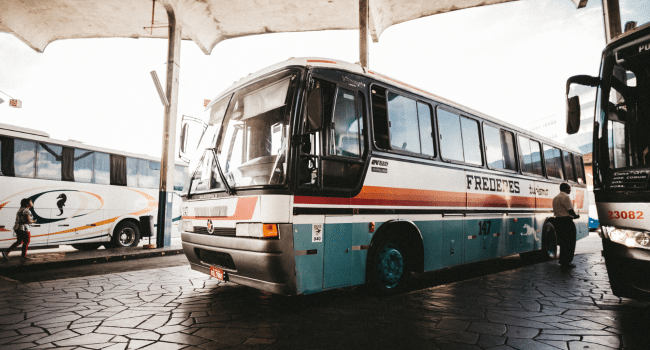Table of Contents
Public and private transportation in Nepal plays a crucial role in connecting cities, towns, and rural areas. Buses are the backbone of the transport system, helping people travel efficiently, and businesses transport goods. Whether you are a business owner, a transport operator, or affiliated with an institution in search of a dependable bus, selecting the appropriate one is crucial.
Several factors must be considered when buying a bus to guarantee it fulfils your requirements and functions effectively in Nepal’s varied landscapes. Every detail counts, from passenger capacity to fuel efficiency. Making the correct decision allows companies to operate efficiently, lower operational expenses, and ensure convenient travel. Considering Nepal’s rugged terrain and diverse road conditions, you should choose a bus that provides both durability and performance. Here are the parameters to help you decide the right choice:
Purpose of the bus
The initial step in selecting a bus is to determine its intended use. Buses in Nepal serve multiple purposes, such as public transportation, school services, tourism, and worker commuting. A city bus designed for short trips will have distinct requirements than those of an intercity or tourist bus.
For instance, a school bus comes with additional safety features, whereas a tourist bus prioritises passenger comfort and storage space. Understanding the intention lets you choose the appropriate model with fitting specifications.
Seating capacity and space
The passenger capacity of a bus is among the key aspects to consider. The number of seats may change based on the intended purpose. In Nepal, buses that accommodate between 20 and 50 passengers are frequently utilised for various purposes. Bigger buses are perfect for long journeys, whereas smaller ones fit better for urban routes with regular halts.
It is crucial to consider legroom, luggage storage, and overall seat comfort, particularly for long-distance journeys where travellers are on board for many hours.
Fuel efficiency and engine performance
Fuel costs are a significant expense in bus operations. Choosing a fuel-efficient bus helps save money over time. The bus should have an engine that delivers good mileage while providing sufficient power to handle different terrains. Nepal’s roads include both smooth highways and challenging mountain paths, so the engine should handle steep climbs and rough roads.
Cost of buses in Nepal
The main element influencing a purchase is the price of the vehicle. Bus price in Nepal varies based on several factors, such as brand, engine type, seating capacity, and extra features. Prices can differ depending on whether you want a standard bus, a premium version, or a specialised type. It is important to evaluate various choices and determine if the cost is warranted by the features provided.
TATA Motors offers a diverse range of buses designed for Nepal’s road conditions, ensuring cost-effectiveness while maintaining high quality. Evaluating models and assessing their cost-effectiveness aids in making an informed choice.
Maintenance and availability of spare parts
Buses require routine upkeep to ensure efficient operation. Prior to buying, you need to verify the access to spare parts and service centres in Nepal. A bus featuring readily accessible components and a dependable service network minimises downtime and repair expenses. Opting for a brand known for its excellent after-sales service, like TATA Motors, guarantees that maintenance is easy and trouble-free.
Safety attributes
Passenger safety is a primary concern when selecting a bus. Attributes like anti-lock braking systems, seat belts, fire extinguishers, and emergency exits are crucial, particularly for long trips. Robust safety features are crucial, especially where road conditions may vary greatly.
Comfort and interior features
For buses used in long-distance travel or tourism, passenger comfort is a crucial factor. Air conditioning, comfortable seating, proper ventilation, and entertainment systems enhance the travel experience. Even for daily commuters, a well-designed interior makes a significant difference. Features such as proper lighting, easy entry and exit, and noise reduction technology add to the overall quality of travel.
Technology and connectivity
Modern buses come with advanced technology that improves efficiency. Features such as GPS tracking, digital payment systems, and vehicle monitoring add value to the purchase. In Nepal, where digital payments and online bookings are becoming more common, having technology-enabled features makes the bus more attractive for operators.
Conclusion
Buying a bus in Nepal requires careful consideration of various factors, including purpose, fuel efficiency, safety, and pricing. By evaluating options carefully and selecting a bus with the right balance of cost, performance, and comfort, buyers can ensure a smooth and profitable operation. With trusted brands like TATA Motors offering a range of buses suitable for Nepal’s roads, choosing the right one becomes easier and more efficient.
